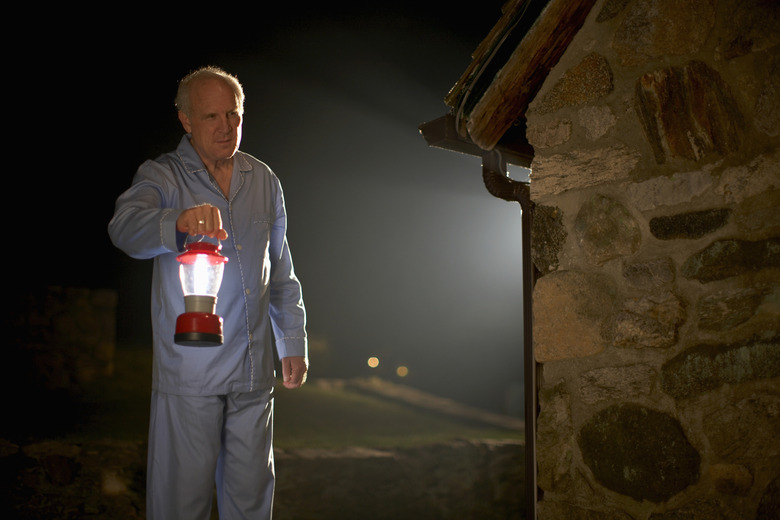Comparison Of LED Lantern To Incandescent Bulb
Light-emitting-diode, or LED, bulbs are long-lasting and extremely energy-efficient. LEDs use a semiconductor as their light source, and the amount of light given off is measured in lumens. Incandescent bulbs are categorized by their wattage, but wattage does not measure brightness; it only indicates how much electricity a bulb uses. LED lighting has many applications and may replace other types of lighting in the future. Battery-operated LED lanterns or flashlights have several advantages over other types of lighting, such as incandescent bulbs. Widespread use of LED lighting, however, may require a reduction in cost.
Longevity Factor
Longevity Factor
LED bulbs are long-lasting. For example, one LED bulb can last for 50,000 hours of use, while a similar incandescent bulb would need to be replaced 42 times during the same period. LED bulbs don't "burn out" like incandescent bulbs — their light output just decreases. When the LED output decreases by 30 percent, the bulb is considered to have reached the end of its life. The battery in battery-powered LED lanterns and flashlights lasts much longer than in those with incandescent bulbs. LED bulbs are rugged, while incandescent bulbs are fragile and break more easily.
Energy Efficiency
Energy Efficiency
LED bulbs are one of the most energy-efficient types available. Incandescent bulbs use about six times more electricity as comparable LED bulbs. If LED lighting were widespread in the United States, about $265 billion in energy costs would be saved, and 40 power plants would not be needed during the next 20 years, according to the U.S. Department of Energy.
Light Quality
Light Quality
Incandescent light bulbs give off a warm light that looks good on human skin. The light spreads out in all directions, while LED lights are directional, which is desirable for some applications, such as recessed lights and spotlights. LED lanterns can give off light in all directions by using separate LED light bulbs for each side of the lantern. The most efficient LED bulbs emit a blue-white color, but LED bulbs also come with red, green or warm yellow light like that produced by incandescent bulbs. Some LEDs can be adjusted to a full spectrum of colors.
No Need to Take the Heat
No Need to Take the Heat
Incandescent bulbs get hot; they give off about 90 percent of electrical energy as heat and use only 10 percent for light. In contrast, LED bulbs don't build up heat and stay cool to the touch. Any heat, produced from electrical power going into the LED device or bulb, is drawn into a heat sink that varies in design and configuration in different LED products. Because LED lanterns don't get hot, they make safe lanterns for camping with children.
Cost Comparison
Cost Comparison
LED bulbs are expensive, costing more than 10 times the price of equivalent incandescent bulbs. Because LED bulbs use less energy and last longer, however, they save money compared to incandescent or compact fluorescent bulbs in the long run. Energy Star-designated LEDs are a good investment, and prices for LEDs are expected to come down in the future, encouraging more LED bulb use.
Cite This Article
MLA
Blue, Marie-Luise. "Comparison Of LED Lantern To Incandescent Bulb" sciencing.com, https://www.sciencing.com/comparison-led-lantern-incandescent-bulb-12329538/. 24 April 2017.
APA
Blue, Marie-Luise. (2017, April 24). Comparison Of LED Lantern To Incandescent Bulb. sciencing.com. Retrieved from https://www.sciencing.com/comparison-led-lantern-incandescent-bulb-12329538/
Chicago
Blue, Marie-Luise. Comparison Of LED Lantern To Incandescent Bulb last modified March 24, 2022. https://www.sciencing.com/comparison-led-lantern-incandescent-bulb-12329538/
